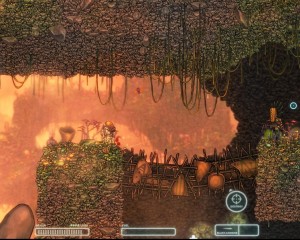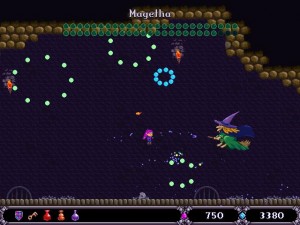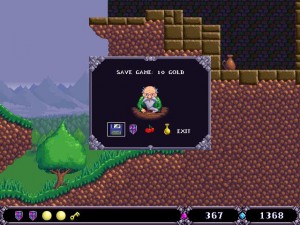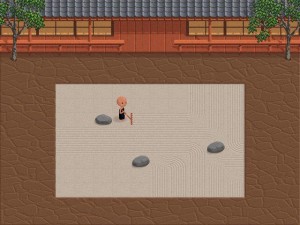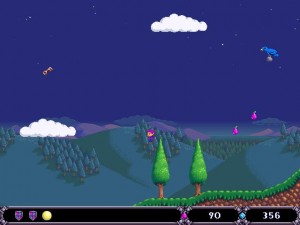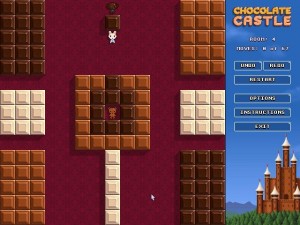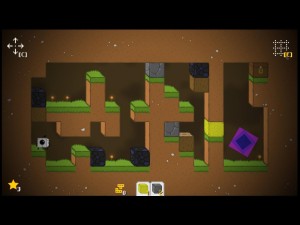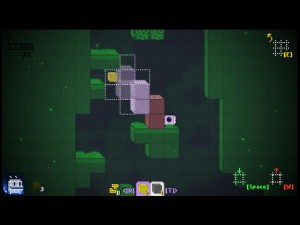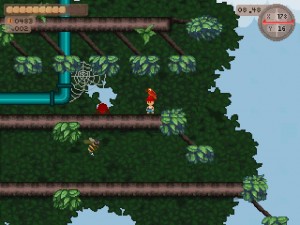 So, I’ve got a little catching up to do now, and multiple things to post about. The week before last, I intended to play through Bugdom (or as much of it as I could get through, anyway) and post about that, and obviously that didn’t happen. What happened instead is that GOG made a retro metroidvania-style platformer called Treasure Adventure Game available for free, and I found it so compelling that I wound up spending most of my gaming time for the week on that instead.
So, I’ve got a little catching up to do now, and multiple things to post about. The week before last, I intended to play through Bugdom (or as much of it as I could get through, anyway) and post about that, and obviously that didn’t happen. What happened instead is that GOG made a retro metroidvania-style platformer called Treasure Adventure Game available for free, and I found it so compelling that I wound up spending most of my gaming time for the week on that instead.
Like VVVVVV, TAG is something of a love letter to a particular era of gaming — in this case, the SNES era. Beyond the pixel art and chiptunes, it’s got such Nintendoisms as the kid hero whose mother-figure sees him off on his journey, dialog where you don’t hear the player character’s side, sudden discrete shifts in terrain type (including a small desert with quicksand pits), and an inventory screen with silhouettes of the items you haven’t collected yet. I suppose it’s de rigeur these days for indie platformers to reference the games that their developers played as children, but that isn’t really what’s going on here; only in the final boss fight does it reference anything directly, using sprites ripped straight from Mario and Castlevania and a couple of others. When this happens, it comes as a bit of a shock, because up to that point the game has been carefully building its own world — one that works by familiar rules, but has its own history and even its own implied continuity with other, nonexistent games: the overarching goal for most of the game is to collect twelve treasures used by a previous legendary hero in his quest, which we’re told were gathered together again by an archeologist and then lost again a few years before the adventure begins.
You can’t use these treasures yourself, as their magic faded long ago, but they’re described as exactly the sort of thing you’d find in a videogame. For example, there’s a “Chaos Whistle” that “would confuse enemies, causing them to attack their allies”, and an “Echo Mirror”, “used as a shield to reflect spells cast at him back at the attacker”. Rather pointedly, the player character collects twelve tools of his own over the course of the game, albeit for the most part humbler and more prosaic ones, such as a shovel and a flashlight. Things that a young boy who goes exploring might find useful.
Because that’s the one of the main themes here: not just exploring, but a Nintendoized version of the kind of exploring found in stories for boys. There’s buried treasure to dig up, dirt tunnels to crawl through, a secret laboratory in the forbidden tunnels underneath an office building. There are also talking bugs and a variety of silly hats to wear, some of which actually have effects on gameplay. It’s very much a childhood fantasy of a game, by which I mean not just that the content is like a child’s fantasy (of having freedom and power, of having meaningful things to do in the world — in short, a fantasy of adulthood), but that it’s the sort of game that we wanted games to be when we were children, but which the actual games of the time fell short of. But the nostalgia factor means that it’s not really pitched at children, so it’s more like a memory of a fantasy, or a fantasy of being young to have a fantasy like this one.
Mind you, there are things here that no official Nintendo game would include. I refer specifically to the drug references. OK, yes, Mario does magic mushrooms. Ha ha. Well, that which you could read into Mario is downright explicit here. There’s a cave realm inhabited by mushroom people who talk like stoners, who are described as “junkies” by your parrot sidekick, and some of whom are hallucinogenic: touch them, and the screen warps alarmingly, while platforms that you couldn’t see or stand on before appear, allowing you to, well, get higher. I don’t want to make it sound like this a game about drugs overall, though. This is just one section in a large game, and elsewhere, the only things hinting at drugs are occasional bongs in the background in the pawn shops and junk stores found in most of the game’s towns.
Now, I call it a “large game”, but I managed to finish it in less than a week. It may not be large in an objective sense. But it does a very good job of seeming large. Partly I think this is due to the due to the amount and variety of background detail, like the aforementioned bongs. True, it’s all coarsely pixelated, but this in fact helps: the backgrounds are made of the same sorts of sprites as the foreground, which means that anything could be interactive until you try and fail to interact with it. Even when you can’t interact with stuff, very often the NPCs do. This gives it a sort of Little Computer People vibe, as if there really is a simple, pixelated world going on unrelated to your platforming heroics. And the sense of world is reinforced by the fact that it’s contiguous: everything outdoors exists in a single space. Interiors break this consistency — buildings tend to be larger on the inside — but the world as a whole is one big platforming space, not even divided up into screens, composed of multiple islands that you sail between in real time, without exiting to a world map or anything of the sort. (There is a shortcut to travel, but you can’t access it until you’ve been most of the way around the world the hard way.) Late in the game, you acquire a diving helmet that lets you explore the depths between the islands, where there’s sunken treasure to be found. The interesting spots underwater are sparse, but the underwater is still a consistent, contiguous world, with as much ocean floor as there is ocean surface, and that helps the sense of scale.
Now, about that boat. Boats are seldom a good idea in games, in my opinion. I particularly dislike them in strategy games like Civilization and Empire; they’re probably part of the reason I haven’t finished the Plane of Water level in Heroes Chronicles: Masters of the Elements yet. In such games, you usually have to build the boat, using up resources in the process, then gather your units and go through a special boarding step, and then very often your units can’t use their normal actions, and the whole thing is vulnerable to sinking. Even in a platformer, a boat typically means learning a distinct and less-capable control system. The point is that, although boats in games are in theory a convenience, letting you cross otherwise-uncrossable bodies of water, they’re typically experienced as an inconvenience. Well, the boat in TAG is about as convenient as a boat can be. Supposedly, it uses advanced technology to shrink down and fit in your pocket when not in use. The effect in the game is that when you jump into the water, be it the ocean or a pool in a cave, the boat appears automatically, and when you jump back onto land, it goes back in your pocket. It does prevent you from attacking normally, but once you’ve upgraded it with a cannon, it more than makes up for it. There are even places where you deliberately jump into the water just so you can use the cannon.
I do have a couple of complaints. The default key bindings are weird; fortunately, it’s a simple matter to rebind them. (The game seems to want to be played from a gamepad with four face buttons. I played with arrow keys and WASD instead.) There’s a strange business with (non-hallucinogenic) mushrooms throughout the world: there are bouncy mushrooms you can trampoline on, but in some places they start off too small to be used this way, and only grow to maturity after you’ve reached the place they allow access to by some other route. In other words, they become a shortcut for return visits. The problem is that the immature form looks too much like the mature form. It’s quite frustrating, early in the game, to learn that pink speckled mushrooms can be jumped on, then unexpectedly not have it work. This is more like what I described with boats in other games: a convenience that’s experienced as an inconvenience.
Overall, though, this is a really good game, and I suggest you try it if you haven’t already — it is free, after all. It’s particularly good at reusing locations, making the meaning of a particular island or dungeon room change as you gain new tools and can approach it in different ways. And that’s metroidvania in a nutshell, really.
 Comments(0)
Comments(0)
